FTL had been on my radar ever since someone tipped me off to its Kickstarter campaign. I have a debilitating weakness for procedurally generated games and the developer’s brazen name-dropping of Firefly was enough to tip me over the edge into slavering anticipation. It’s the closest I’ve ever come to actually pledging money to a Kickstarter. I didn’t, but it’s the thought that counts and so on.
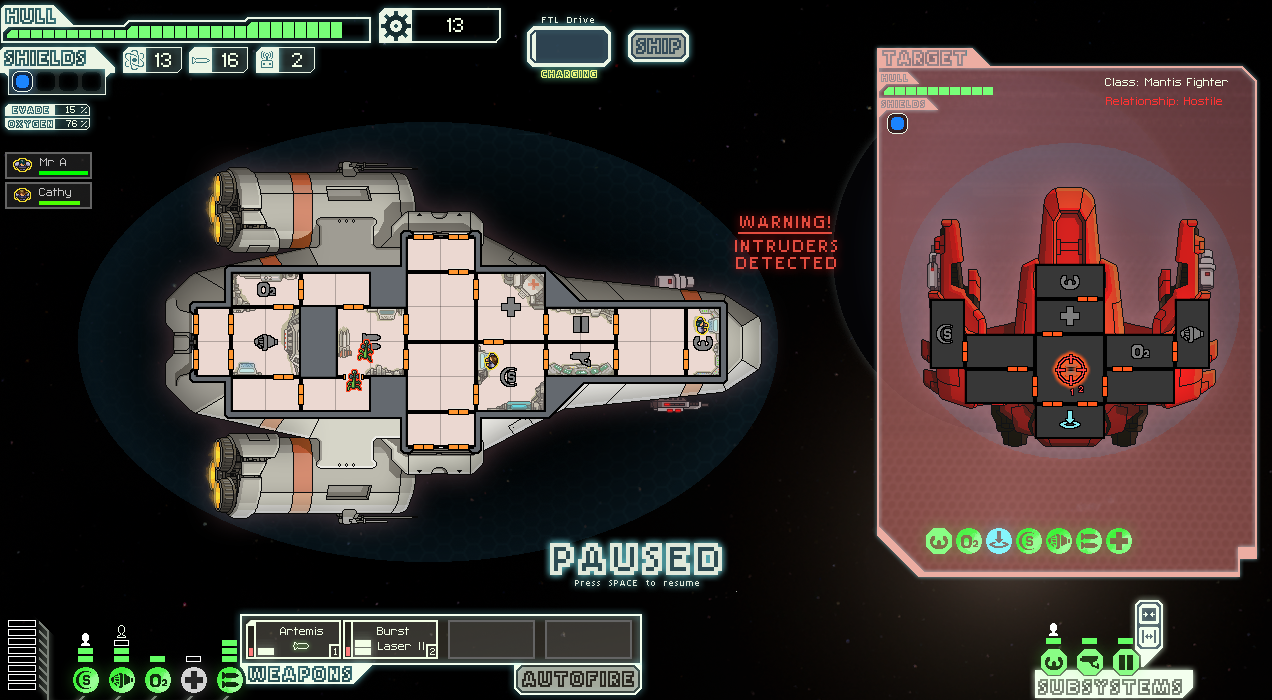 When I found out about FTL’s confirmed release less than a week before the fateful day, I went out of my way to clamp weary pessimism over my delirious excitement. ‘It’s a Kickstarter-funded indie game,’ I reprimanded myself. ‘Ziggy says there’s an 82% chance of it being rubbish.’ With past disappointments looming at my shoulder, counselling caution, I tentatively launched FTL and discovered with a growing sense of unease that it is exactly what it set out to be.
When I found out about FTL’s confirmed release less than a week before the fateful day, I went out of my way to clamp weary pessimism over my delirious excitement. ‘It’s a Kickstarter-funded indie game,’ I reprimanded myself. ‘Ziggy says there’s an 82% chance of it being rubbish.’ With past disappointments looming at my shoulder, counselling caution, I tentatively launched FTL and discovered with a growing sense of unease that it is exactly what it set out to be.
As someone who read a lot of solo gamebooks back in their heyday, the first comparison for FTL that comes to mind is the Fighting Fantasy series’ Starship Traveller. The game gives you a basic spacecraft and a crew of three. You have some fuel – though not enough – a handful of missiles and a few bits of the scrap that serves as currency in space, and with these meagre reserves you have to flee the advance of the savage rebel forces in order to convey vital strategic information to the beleaguered federation.
Narratively it’s an unusual arrangement; games, like films, generally have us rooting for the underdog. Here we are alone against a huge force, but we are also agents for a still larger force. It’s not even a cut-and-dried, good-versus-evil situation. The federation seems to be not much beloved of the populace, but at the same time the rebels are widely considered pompous and opportunistic. Neither faction is really in the right, and that’s perfectly fine for the game, since you will seldom see the bigger picture until the endgame. For the most part it’s just you and your little ship trying to get across the galaxy, scrimping and saving every missile, every drop of fuel and every fistful of scrap.
 The FTL adventure definitely has a sort of Firefly-meets-Star Trek: Voyager feel, in that you often just barely scrape through. Most battles present a credible threat even on the easiest setting, and even outside combat you often find yourself watching tensely as your resources dwindle while all you can do is keep moving and hope you’ll stumble across a cache of fuel.
The FTL adventure definitely has a sort of Firefly-meets-Star Trek: Voyager feel, in that you often just barely scrape through. Most battles present a credible threat even on the easiest setting, and even outside combat you often find yourself watching tensely as your resources dwindle while all you can do is keep moving and hope you’ll stumble across a cache of fuel.
The most basic battles revolve around targeting parts of the enemy vessel. Target their shield generator to leave them vulnerable, or their weapons room to prevent them firing on you. Take out their engine room if they try to escape, or, if you’re feeling particularly cruel, shoot out their oxygen supply. This alone is a more detailed combat system than most randomly generated adventures, but it’s only the beginning.
You see, FTL is, at its core and as dull as it sounds on paper, all about resource management. Each improvement in your ship’s performance makes combat and sudden disaster less hazardous but also puts more strain on your already limited supplies. Even just buying an upgrade, such as a better engine to improve your ability to evade attacks, isn’t as simple as it sounds. Each upgrade also requires power, so you have to either spend more of your precious scrap upgrading your reactor to generate more power, or you have to shut down other systems and keep re-routing your energy supply as circumstances demand.
It isn’t long before the initially simple combat becomes a frantic scramble to ensure the relevant systems are powered up – shut down the medical bay to divert power to the weapons, then divert it back as your crew sustain injuries and instead take power from the air system, but make sure you finish the fight before everyone suffocates. Once you factor in fires, hull breaches and being boarded by the enemy crew you find 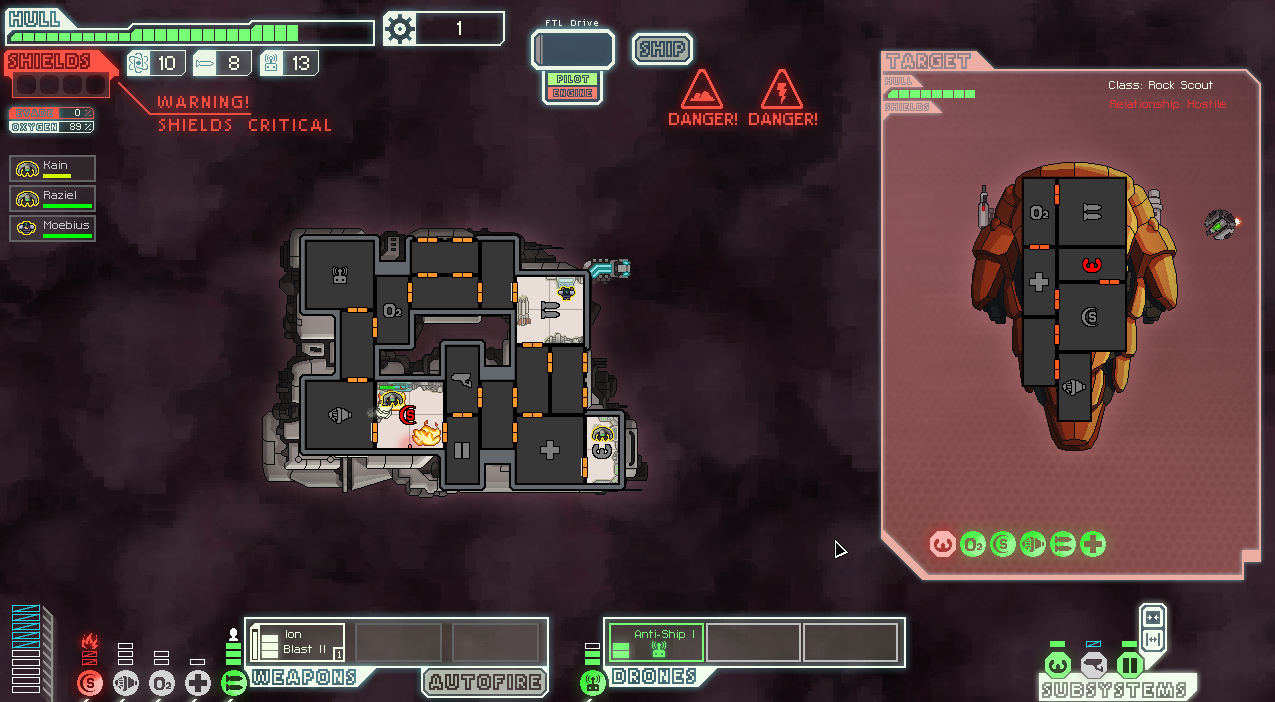 yourself wrestling with a surprisingly elaborate strategy game that puts you through a punishing series of short skirmishes.
yourself wrestling with a surprisingly elaborate strategy game that puts you through a punishing series of short skirmishes.
This is no RTS, though. There’s limited scope for planning. Since you never know what you will face next, you can never really be prepared, and each encounter is a panicked rush to react to the sudden danger. Even space itself is out to get you. Nebulas limit your ability to scan enemy ships, and even go as far as to truncate your internal sensors. Woe betide anyone whose ship catches fire inside a nebula; the only way to locate the blaze is to send someone looking for it – and risk them accidentally stepping right into it.
Solar flares and asteroid fields are worse still. They rob you of the opportunity to carry out repairs after combat, continuing to assault you after the enemy ship is gone and forcing you to quickly jump away to the next system, where the unknown awaits once more. Like Firefly or the modern Battlestar Galactica, your voyage is less a heroic expedition than a febrile stagger from crisis to crisis, throwing together improvised solutions to survive an endless torrent of catastrophes.
That’s the real strength of FTL. ‘Randomised space exploration through the medium of resource management’ might sound as tedious as a sanitation conference, but in practice it’s a tense experience that might grey your hair long before its time. Failure and destruction lurk only moments away at all times, and when you succeed it will usually be by the narrowest of margins. The occasional frustration that results from random chance throwing you into an almost impossible situation is mitigated by the sense of accomplishment when you do manage to limp to the end of your journey with your ship and nerves in tatters, but aglow with hard-won triumph. If you’re anything like me, you will feel like a hero. I felt like Mal Reynolds, or James T Kirk, or Nick Succorso – a grizzled but daring captain whose bold plans and reckless gambits carried him and his devoted crew through the depths of hell on a wave of sheer audacity.
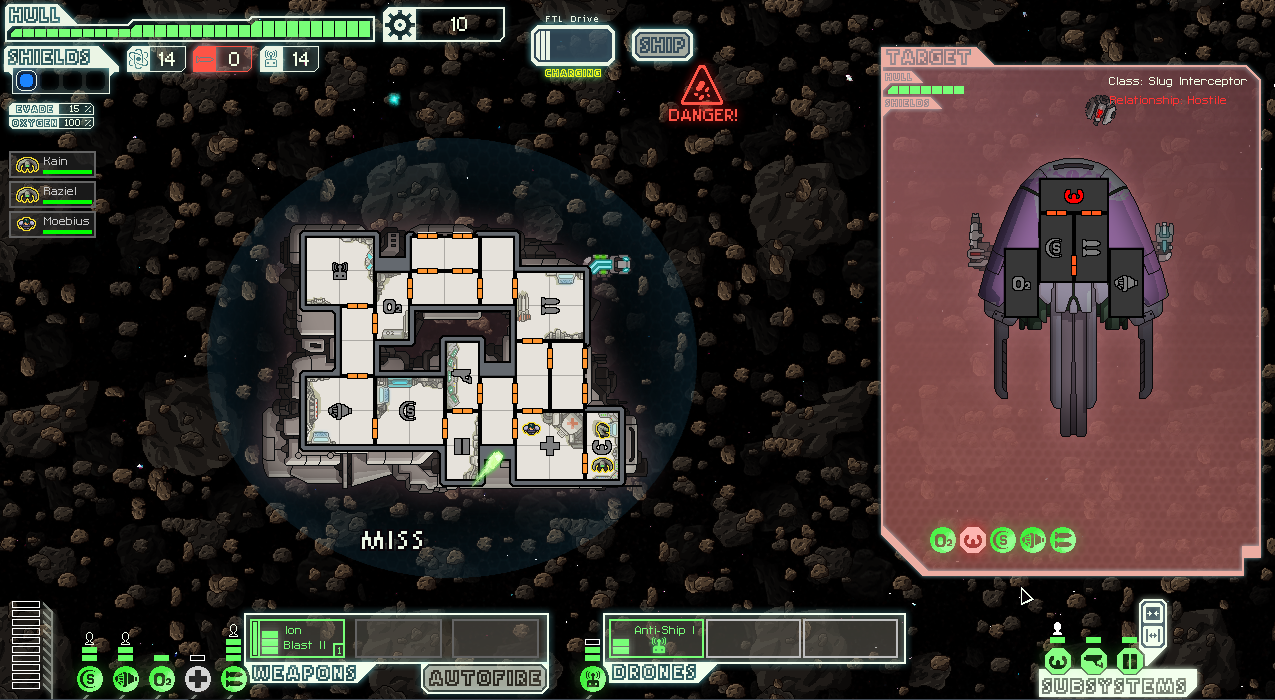 Don’t rest on your laurels too long, though. The itch to campaign through space that FTL imparts isn’t scratched so easily, and there is a lot more to discover. Each journey is different thanks to procedural generation, and there are various different ships and interior layouts to unlock, which make more than a cosmetic difference. While you might soldier on to victory with the default Kestrel, the unlockable Engi vessel’s dependency on drone technology might see you founder in the first few encounters. Each ship demands different skills; even the different layouts for the rooms in the ship will affect how easily you can make repairs and extinguish fires.
Don’t rest on your laurels too long, though. The itch to campaign through space that FTL imparts isn’t scratched so easily, and there is a lot more to discover. Each journey is different thanks to procedural generation, and there are various different ships and interior layouts to unlock, which make more than a cosmetic difference. While you might soldier on to victory with the default Kestrel, the unlockable Engi vessel’s dependency on drone technology might see you founder in the first few encounters. Each ship demands different skills; even the different layouts for the rooms in the ship will affect how easily you can make repairs and extinguish fires.
The simplest and clearest expression I can give you of my opinion of FTL is this: once I started, I couldn’t stop playing it for days. I repeatedly and unwisely stayed up until 2am in defiance of my day job commitments, simply to continue trying to cross the galaxy with my tiny crew of desperate fugitives.
If any of this makes you think ‘that sounds interesting’, then you will probably enjoy it. FTL has always promised a lot, since its Kickstarter days, and this is one game that actually delivers on all its promises. Just be warned: once FTL boards your life, there’s no escape.
Overall Rating: 




© 2012 – 2013, The Indie Mine. All rights reserved.



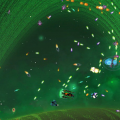
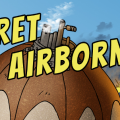
Quote:
the only way to locate the blaze is to send someone looking for it
End Quote.
This is not entirely true. If you look at the lower left of the screen (It is even seen in one of your screenshots) You will see a fire icon over any system that has a fire in the room. However, this does not work for fires that are in empty rooms.
It’s games like this that make me wish sometimes that I was just a consumer and not part of the press, jumping from game to game. Probably won’t have a chance to play this one for awhile, but definitely looking forward to it when the opportunity arises.
After reading more than a few excited tweets and watching a ‘Let’s Play’ or two, I’m curious about the game myself. Seems smart / addicting, and, as always, top work from Alan. I’m in the same boat, though; being ‘press’ doesn’t lend itself to enjoying games I don’t intend to review. One day, perhaps. One day.